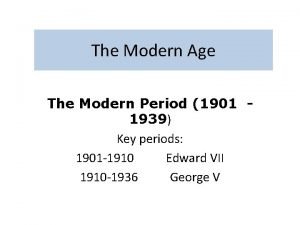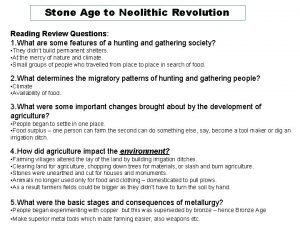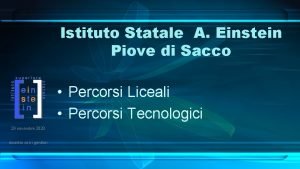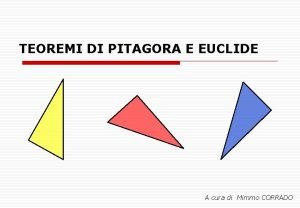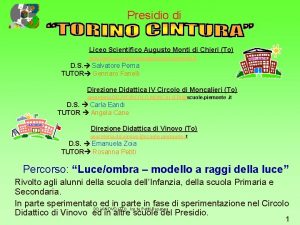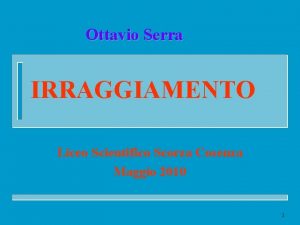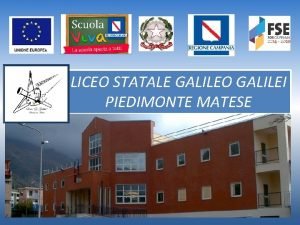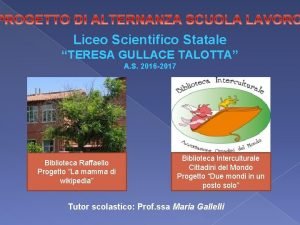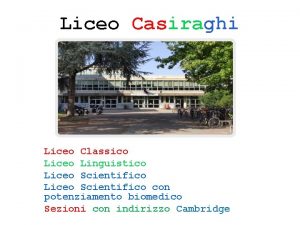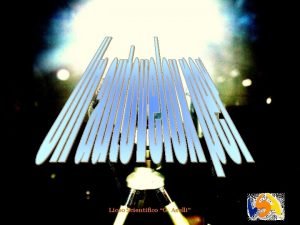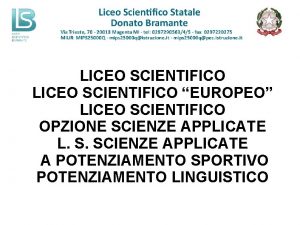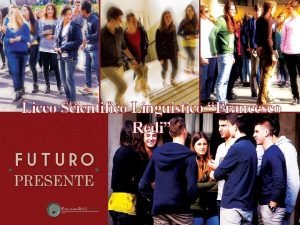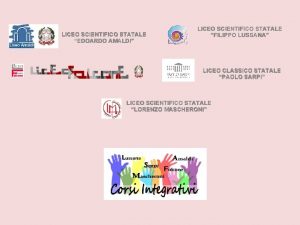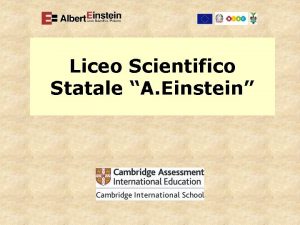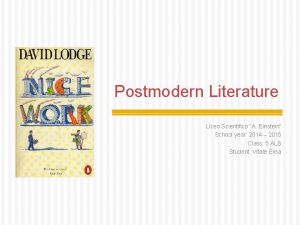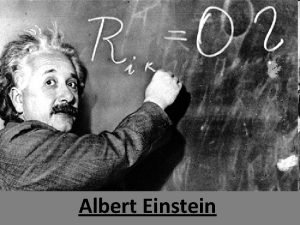The Modern Age Liceo Scientifico A Einstein School







![Modern Literature: T. S. Eliot Mythical method • “[Using myth] is simply a way Modern Literature: T. S. Eliot Mythical method • “[Using myth] is simply a way](https://slidetodoc.com/presentation_image_h2/1e6d193e29bb6dce28a0bae50c2e5abd/image-8.jpg)

- Slides: 9

The Modern Age Liceo Scientifico “A. Einstein” School year: 2014 – 2015 Class: 5 ALS Student: Vitale Elisa

The Modern Age: political and economical crisis • 1890 – 1930 • Tension between European nations because of – Colonialism – Trade • Tension led to World War I (1914 – 1918) – New technologies: shocking power of destruction – Battleground included Europe, Asia and Africa • Consequences: – Europe lost self confidence – URSS and USA became the leading nations in the world – People lost faith in liberal democracy, capitalism, the idea of progress – People lost faith in religion NEXT

The rise of the working class • 1917: October revolution led by Lenin • The working class wanted to achieve a better position – People lost faith in liberal democracy and capitalism – 1870 s – 1880 s: economic and financial crisis caused unemployment – Karl Marx’s “Communist Manifesto” (1848) encourages the rise of the working class • The middle class introduced – National insurance – Unemployment pay – Medical treatment BACK

Religious crisis World War I: violence and death ↓ Absence of God = Man’s isolation How was it perceived in literature? • Pessimism and acceptance (Hardy, Conrad) • Personal relationship replaced divine love (Woolf, Lawrence, Forster) • Adhesion to Christianity (Chesterton, Eliot) • Social commitment (Show, Wells) BACK

New discoveries and ideas Science • Euclidean geometry non Euclidean geometries • Newtonian physics 1905: Albert Einstein’s relativity – Time and space depend on the observer’s point of view Philosophy and psychoanalysis • Henri Bergson: past and future fuse together with the present in a stream of consciousness • Sigmund Freud: “The ego is not master in its own house”

Modern Literature: Poetry War poetry • Importance given to sounds • Irony • Realism, details • Unconventional structure, punctuation Symbolist poetry • The poet understands the unconscious • Literary language speaks to the irrational part of the reader • Importance given to sounds • Free verse The Imaginist Movement • Dry and hard language • Clear precise images • Reflects modern reality • Literary references: poetry addresses a small audience

Modern Literature: the Novel Old Novel • The reader is guided by a first/third person omniscient narrator • It conveys: – A set of values – A judgement • Narrative structure of the novel VS New Novel • The reader is invited to interact with the literary work: – No judgement, comments, observations from the narrator – The narrator hides behind characters – Identification with characters • New idea of time – Stream of consciousness – Dramatic structure of the novel
![Modern Literature T S Eliot Mythical method Using myth is simply a way Modern Literature: T. S. Eliot Mythical method • “[Using myth] is simply a way](https://slidetodoc.com/presentation_image_h2/1e6d193e29bb6dce28a0bae50c2e5abd/image-8.jpg)
Modern Literature: T. S. Eliot Mythical method • “[Using myth] is simply a way of controlling and ordering, of giving a shape and a significance to the immense panorama of futility and anarchy which is contemporary history” Correlative objective: • “a set of objects, a situation, a chain of events which shall be the formula of that particular emotion” • Immediate evocation of emotions

Modern Literature James Fraser • Interest in – Darwin’s theories – Symbolist poetry – Mythology and pre-history – Civilization (study of society) • Unconscious conveyed through symbols Jesse Weston • Synthesis of geography and history • Interest in the Middle Ages and Grail legends – “romantic literary version of the figure of a divine or semidivine ruler at once God and King, upon whose life, and unimpaired vitality, the existence of his lord and people directly depend. ”
